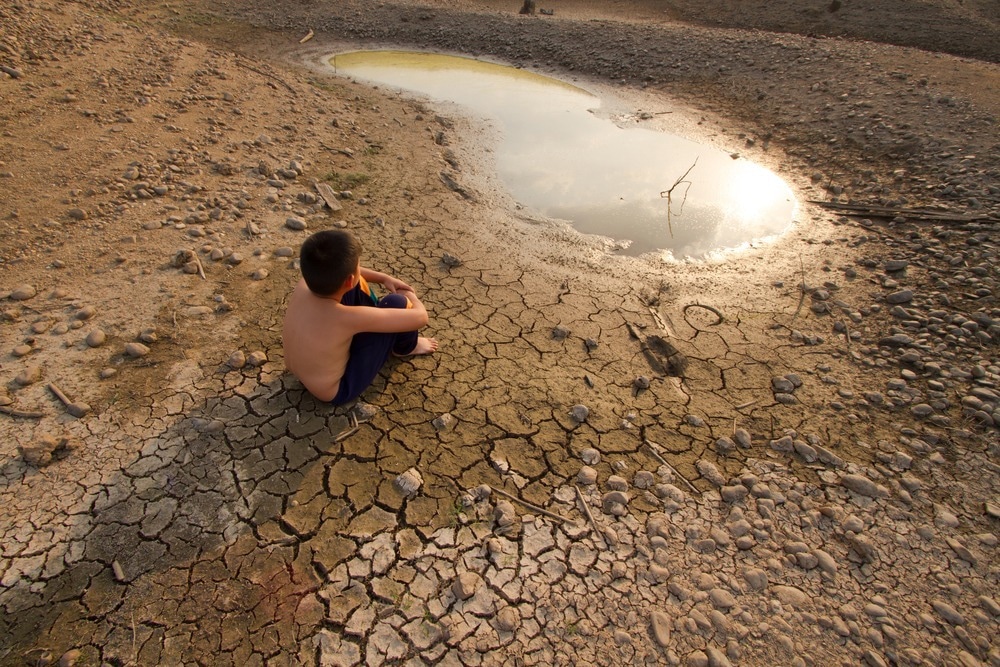Global atmospheric circulation is influenced by changes to the climate. In turn, this impacts precipitation and evaporation in large parts of the world, reducing the amount of river water available for local use.

Image Credit: Piyaset/Shutterstock.com
Until now, projections of climate impact on stream flow have typically been calculated using physical models, such as those reported by the IPCC (Intergovernmental Panel on Climate Change).
However, new data analyses led by Prof. Günter Blöschl (TU Wien, Vienna) showed that earlier models consistently underrated the degree of sensitivity water availability has in response to changing climate parameters.
An examination of measurement data from over 9,500 hydrological catchments around the world reveals that climate change can exacerbate local water crises to a greater extent than previously thought. The findings have been published in the scientific journal Nature Water.
Model Approach and Measured Data Approach
In the climatology community, the effects of climate change on the atmosphere are very well understood. However, their local consequences on rivers and the availability of water falls into the field of hydrology.
Günter Blöschl, Professor, Institute of Hydraulic Engineering and Water Resources Management, Vienna University of Technology
Regionally, it is often possible to describe very well how water availability is connected to external parameters like precipitation or temperature—this is being researched at several measuring stations around the world, particularly at Blöschl’s hydrology laboratory in Petzenkirchen, where innumerable sensors have been installed over a 60-hectare area. Individual observations, however, cannot be used to draw broad conclusions.
Günter Blöschl adds, “How the water balance depends on external parameters varies from place to place; local vegetation also plays a very important role here.”
It is difficult to create a simple physical model that can be used to precisely calculate these interrelationships everywhere in the world.
Günter Blöschl thus worked with co-workers from China, Australia, the United States, and Saudi Arabia to compile and analyze a massive database of streamflow observations from around the world. Over 9,500 catchments were included, with time series spanning several decades.
The Water System Reacts to Climate Change More Sensitively Than Thought
So we don't base our analysis on physical models, but on actual measurements. We look at how much the amount of available water changed in the past when external conditions changed. In this way we can find out how sensitively changes in climate parameters are related to a change in local water availability. And this allows us to make predictions for a future, warmer climate.
Günter Blöschl, Professor, Institute of Hydraulic Engineering and Water Resources Management, Vienna University of Technology
And it turns out that the relationship between precipitation and the amount of water in rivers is far more sensitive than earlier thought—and thus much more sensitive than is anticipated in the models currently used to monitor climate change.
Climate change forecasting models for water supply should therefore be fundamentally modified.
Up to now, runoff measurements have usually not been included at all in the models, such as those currently reported by the IPCC. With the series of measurements now available, it should now be possible to adjust the physical prediction models accordingly.
Günter Blöschl, Professor, Institute of Hydraulic Engineering and Water Resources Management, Vienna University of Technology
More Severe Than Assumed
In any case, the findings of the research team led by Günter Blöschl indicate that the threat of climate change to water supply in many parts of the world has been understated thus far. The new data, particularly for Africa, Australia, and North America, forecast a substantially higher risk of water supply crises by 2050 than initially believed.
Journal Reference:
Zhang, Y., et al. (2023) Future global streamflow declines are probably more severe than previously estimated. Nature Water. doi.org/10.1038/s44221-023-00030-7.